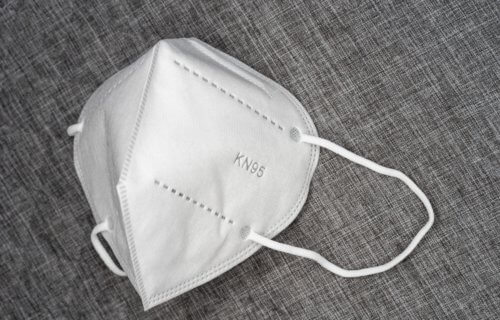PLYMOUTH MEETING, Pa. — While many believe the N95 respirator mask is the best way to defend against COVID-19, a concerning new study is waving the red flag over the mask’s Chinese counterpart. A non-profit healthcare advisor in Pennsylvania finds the majority of KN95 masks coming from China don’t meet U.S. health standards.
An analysis of nearly 200 face masks by ECRI Institute reveals 60 to 70 percent of KN95 masks produced in China don’t actually filter out 95 percent of aerosols, tiny and potentially infectious droplets. The poor test results on 15 different manufacturer models are causing ECRI to issue a high priority hazard alert. They are advising major healthcare networks and U.S. hospitals buying these masks during the pandemic to avoid using them in situations where healthcare workers are in direct contact with COVID-19 patients.
“Because of the dire situation, U.S. hospitals bought hundreds of thousands of masks produced in China over the past six months and we’re finding that many aren’t safe and effective against the spread of COVID-19,” says ECRI’s president and CEO Marcus Schabacker in a media release.
“Using masks that don’t meet U.S. standards puts patients and frontline healthcare workers at risk of infection. As ECRI research shows, we strongly recommend that healthcare providers going forward do more due diligence before purchasing masks that aren’t made or certified in America, and we’re here to help them.”
Can KN95 face masks still be useful?
The ECRI report finds most KN95 mask fail to meet the U.S. National Institute for Occupational Safety and Health (NIOSH) standard for what qualifies as N95. Although this makes them a bad option for healthcare workers, researchers say they should be useful for the general public. The study finds KN95 masks can provide better protection for people who are not coming into contact with bodily fluids and respiratory particles on a regular basis.
“KN95 masks that don’t meet U.S. regulatory standards still generally provide more respiratory protection than surgical or cloth masks and can be used in certain clinical settings,” ECRI’s vice president for technology and safety Michael Argentieri adds. “Hospitals and staff who treat suspected COVID-19 patients should be aware that imported masks may not meet current U.S. regulatory standards despite marketing that says otherwise.”
ECRI calls these masks a “last resort” option for first responders and healthcare professionals treating coronavirus patients.
Why are there still so many Chinese-made masks in U.S. hospitals?
ECRI explains that many Americans healthcare providers were in a panic to meet the possible demand for personal protective equipment (PPE) at the beginning of the global pandemic. Many turned to foreign markets, namely China, who were already mass producing masks. Multiple studies point to the Wuhan region of China as the virus’s birth place.
Although the U.S. government began producing its own PPE in the months following the declaration that COVID-19 was a pandemic, some medical facilities still run into supply shortages. ECRI says some hospitals believe they are now competing with the federal government for American-made products. They add both groups are likely trying to fill PPE orders, straining the new supply chain.
For those who still have Chinese-made KN95 masks, the report finds one version is better than others. Non-certified face coverings that have a head and neck strap are better than the ones with just ear loops. These masks aren’t perfect, but they will form to the user’s face better and filter out more particles.
Like studies? Follow us on Facebook!
